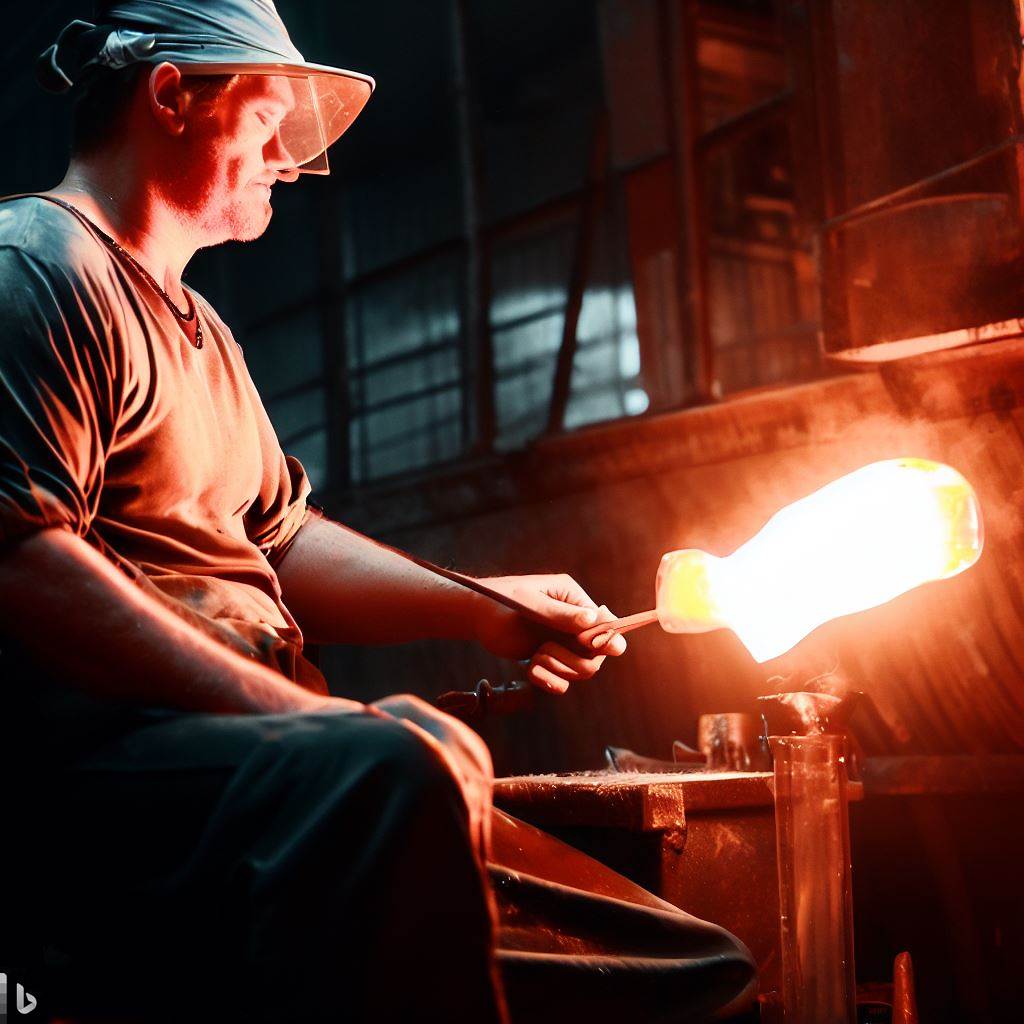Elevating Your Glassblowing: Pro Tips for Optimizing and Troubleshooting Your Work
Glassblowing is a complex and challenging art form that requires years of practice to master. However, there are a few key tips and tricks that can help intermediate glassblowers take their work to the next level.
Achieving Proper Heat
One of the most important factors in glassblowing is heat control. The glass must be heated to the correct temperature in order to be properly worked. If the glass is too hot, it will be too soft and difficult to shape. If the glass is too cold, it will be brittle and break easily.
The ideal working temperature for glassblowing is around 2,100°F-2,250°F. However, the specific temperature will vary depending on the type of glass being used.
Smoothing Out the Paraison
The paraison is the initial heated glass blob that is used to create the finished glass object. It is important to smooth out the paraison before blowing it in order to create a symmetrical and even shape.
To smooth out the paraison, roll it back and forth on the marver table. The marver table is a flat, smooth surface that is used to shape and smooth glass.
Controlling Your Breath
When blowing glass, it is important to control your breath in order to create a smooth and even inflation. If you blow too hard, the glass will become too thin and weak. If you do not blow hard enough, the glass will not inflate properly.
The best way to control your breath is to practice blowing balloons. This will help you to develop the muscle memory necessary to control your breath while blowing glass.
Balancing Heat and Gravity
When shaping blown glass, it is important to balance the heat and gravity of the glass. If the glass is too hot, it will sag under the weight of gravity. If the glass is not hot enough, it will be difficult to shape.
The best way to balance heat and gravity is to use a combination of heat and localized cooling. To cool a specific area of the glass, you can use a paddle or a cold rod.
Preventing and Managing Collapse
If the glass becomes too thin, it can collapse. This can be prevented by maintaining even wall thickness and by avoiding drastic temperature changes.
If a collapse does occur, you can try to salvage the piece by using a punty rod or by coldworking the edges. However, it is often best to start over if the collapse is too severe.
Achieving Consistent Thickness
It is important to achieve consistent thickness when blowing glass in order to create a strong and even piece. To achieve consistent thickness, you should use a combination of heat and localized cooling.
You should also avoid overinflating one area of the glass excessively. This can cause the glass to become thin and weak.
Smoothing Edges and Marks
After blowing glass, it is important to smooth out the edges and marks. This can be done using a bench knife or a stone.
You should also remove any punty marks that may have been created when the glass was removed from the blowpipe.
Mastering Complex Shapes
As you become more experienced, you can start to attempt more complex shapes. When working with complex shapes, it is important to consider weight distribution and to plan ahead.
You should also practice regularly in order to develop the muscle memory necessary to create complex shapes.
Cultivating an Artistic Eye
As your technical skills improve, it is important to cultivate an artistic eye. This means being able to visualize the finished product and to make adjustments as needed.
You can cultivate your artistic eye by studying other glass artists and by experimenting with different techniques.
Lifelong Learning in Molten Artistry
Glassblowing is a lifelong learning process. There is always something new to learn, and there is always room for improvement.
The best way to stay ahead of the curve is to be open to new ideas and to be willing to experiment.
Conclusion
Glassblowing is a challenging but rewarding art form. By following the tips and tricks in this article, you can take your glassblowing skills to the next level.
